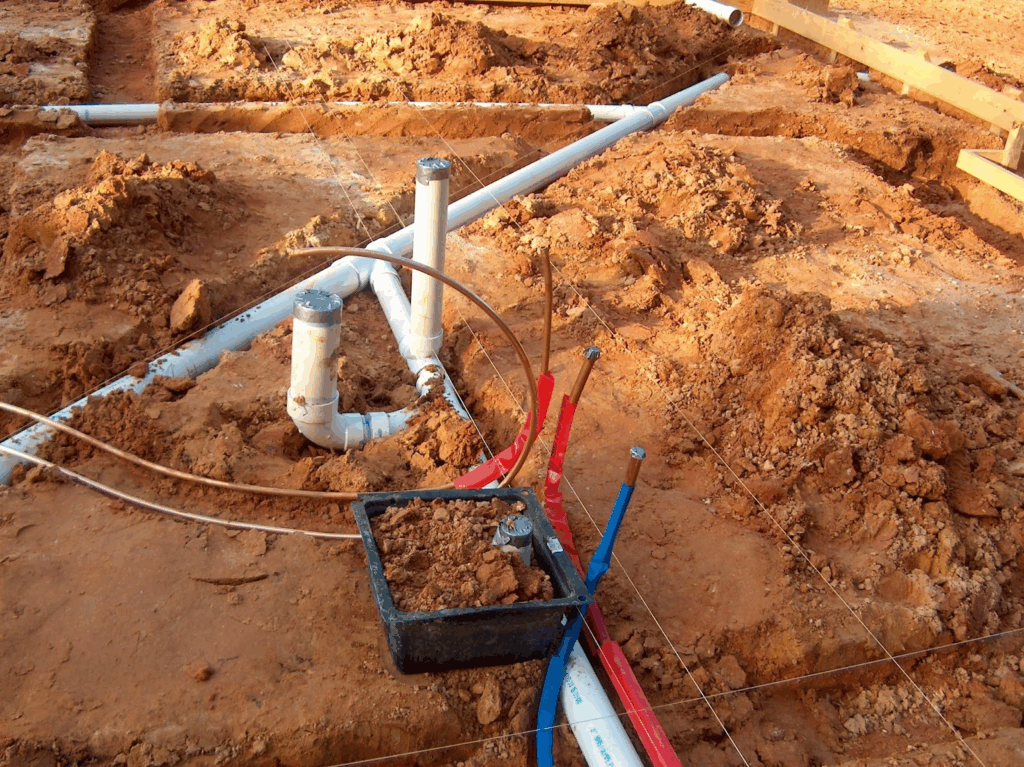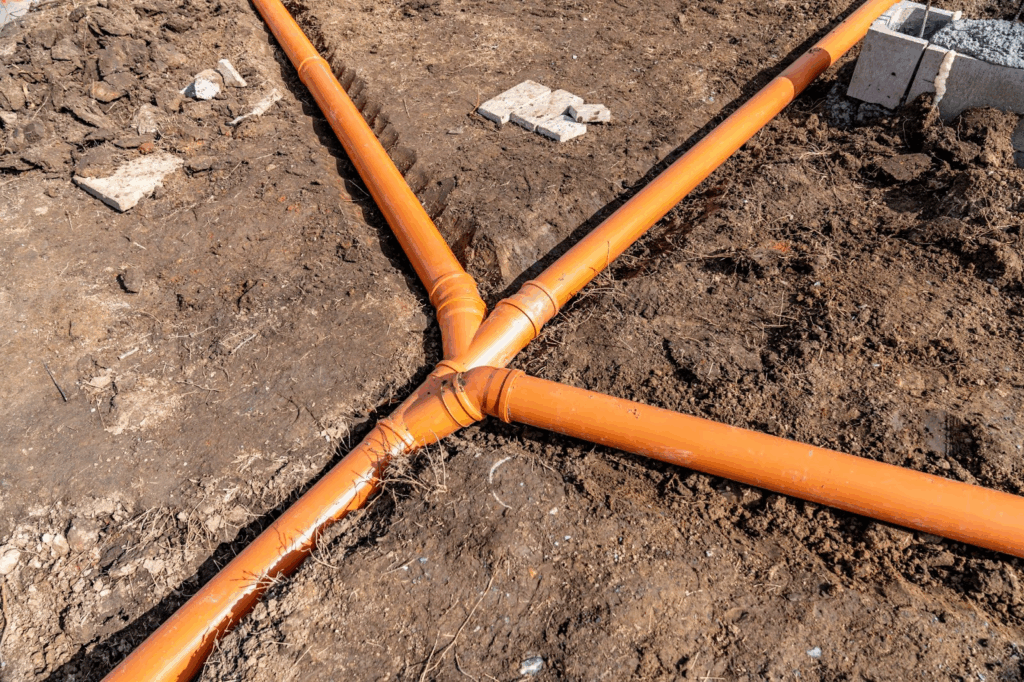Owning a home means caring for more than just what you can see. While it’s easy to notice a leaky faucet or peeling paint, your sewer lines stay out of sight—and often out of mind. But the mess can be costly, stressful, and challenging to ignore when it goes bad. Most people don’t think about their sewer system until there’s sewage in the shower or strange smells in the yard. Knowing how sewer lines work, what can go wrong, and how to stay ahead can save you a severe headache.
What Sewer Lines Do and Why They Matter
A home’s sewer line does a quiet but critical job daily. It channels wastewater from every drain in your home to the city’s main line or a septic tank. When it’s working, you don’t think about it. But once there’s a problem, your whole plumbing system can go down fast. Understanding sewer lines’ function gives you better control over your home’s infrastructure:
Basic Function of a Sewer Line
The sewer line carries waste from all parts of the house, including sinks, showers, toilets, laundry machines, and dishwashers. It runs underground and connects to a public system or a septic tank. Most residential lines are made from cast iron, PVC, clay, or ABS. A break in this line can stop the entire flow of wastewater.
Types of Sewer Lines and Materials
There are private sewer laterals and public sewer mains. The lateral line connects your home to the city’s sewer system. Some systems use gravity to move waste, while others rely on pressure. Materials like PVC are newer and more durable than older clay or Orangeburg pipes. The type of sewer line affects its maintenance needs and repair options.
How Local Conditions Impact Sewer Lines
Where you live affects more than your home’s exterior—it can also impact what’s underground. Sewer lines respond differently to regional climate, soil movement, and the age of nearby infrastructure. Understanding these factors helps you spot risk before it leads to damage or expensive repairs:
Soil Conditions and Sewer Line Stress
Soil isn’t just dirt—it shifts, swells, and contracts throughout the year. In areas with heavy clay soil, moisture changes can move the ground and stress your sewer line. This often causes pipes to crack, offset, or sag. Rocky or uneven soil can also wear down older pipe materials over time. Even soft or sandy soils can let the pipe sink or shift, which throws off the drainage flow.
City Sewer Systems and Age of Infrastructure
The condition of your city’s sewer system affects your private line, even if it’s newer. Older neighborhoods often connect to aging public mains that haven’t been upgraded in decades. Some areas also use combined stormwater and sewer lines, which increases the chance of backups during heavy rain. You may face more frequent issues if your home is on a slope or low point. It’s worth contacting your city to learn how often your area’s main lines are inspected or replaced.
Common Problems With Sewer Lines
When something goes wrong underground, you may not notice it at first. However, sewer line problems tend to snowball if left unchecked. One minor issue can lead to widespread backups or even structural damage. Spotting the signs as early as possible gives you a shot at fixing things before they escalate. Knowing the common causes can also help you avoid preventable damage:
Signs You Might Have a Sewer Line Issue
Drain backups are a clear warning that something isn’t right. If more than one drain backs up at once, the issue is usually in the main line. You might also hear gurgling sounds from your toilet or see slow-draining water. Foul smells near drains or in the yard can be another clue. Puddles on the lawn without an apparent source suggest trouble underground.
Root Infiltration and Pipe Damage
Tree roots seek out water, and sewer lines are a prime target. Tiny cracks in the pipe allow roots to enter. Once inside, they grow fast and clog the system. Over time, the pressure can break the pipe completely. Even newer lines aren’t immune if there are trees nearby.

Blockages and Grease Buildup
Grease from cooking may seem harmless when it’s liquid. But once it cools in the pipe, it solidifies and sticks to the walls. Over time, it narrows the pipe and causes backups. So-called “flushable” wipes and hygiene products only make it worse. Paper towels and other non-degradable items also contribute to clogs.
Sewer Line Maintenance Tips for Homeowners
A well-maintained sewer line can last decades with minimal issues. But neglect it, and even a new line can cause expensive damage. The good news is that many sewer line problems can be prevented with smart habits and regular checks. You don’t need to be a plumber to catch the early signs. Simple routines help keep your system healthy year-round.
How to Prevent Sewer Line Backups
Be mindful of what goes down the drain. Avoid dumping grease, food scraps, and fibrous materials in the sink. Install mesh strainers in showers and tubs to catch hair. If planting trees, keep them far from the sewer line path. Schedule a professional inspection every three to five years to catch problems early.
DIY Checks Before Calling a Plumber
If a drain is acting up, check others in the home, too. If they’re all slow, the issue may be with the main line. Look for water around floor drains in the basement or utility room. Foul smells or strange noises from pipes are early signs of blockage. Testing multiple fixtures at once can reveal if the system is under stress.
Sewer Line Repair and Replacement
Even with reasonable care, sewer lines age, crack, or collapse over time. Some issues can be fixed with a quick repair. Others, especially in older homes, call for complete replacement. Knowing when a simple fix will do—and when it won’t—can save you a lot of money. The extent and type of damage decide the best route forward:
When Repairs Are Enough
A repair may be enough if the pipe has a small crack or minor blockage. Trenchless repair methods like pipe lining or bursting can fix many issues without digging. These techniques are fast and don’t disturb landscaping. A qualified plumber can confirm if the line is still structurally sound. If it is, a repair will likely hold up for years.
When to Replace the Sewer Line
Some lines are too damaged to patch. Replacements may be cheaper and longer-lasting if you’ve had repeated clogs or repairs. Pipes made of outdated materials like Orangeburg or clay often collapse or sag. In these cases, complete replacement gives you peace of mind. Newer pipes are stronger, more efficient, and less prone to damage.
Cost Factors for Sewer Line Repair
Several factors affect the cost of sewer line work. Shallow lines are easier and cheaper to access, and the type of repair—trenchless or traditional—matters. Material costs and permit fees also add to the total. In cities, sidewalk or street access may require extra steps and higher costs.

Hiring a Professional for Sewer Line Services
Some homeowners want to DIY everything, but sewer lines aren’t the place to cut corners. Hiring the proper professional saves time, money, and stress. It also ensures that the job meets local codes and safety standards. A licensed plumber brings the right tools, training, and experience. Choosing the right contractor makes a significant difference.
What to Expect During an Inspection
A camera inspection is the first step in diagnosing sewer line problems. The plumber inserts a tiny camera through a drain or access point. The camera shows the condition of the line and pinpoints damage. In real-time, you’ll see cracks, clogs, roots, or sags, helping you avoid unnecessary digging or guessing.
Choosing the Right Sewer Line Contractor
Start with licensing and insurance—it’s non-negotiable. Next, look for experience with your type of property and line. Reviews and referrals are excellent indicators of quality work. Some contractors specialize in trenchless methods or pipe relining. Price is important, but don’t let it be the only deciding factor.
Sewer Lines and Home Insurance Options
Homeowners often assume their insurance covers sewer line damage. That’s not always true. Many standard policies exclude it unless added as extra coverage. Knowing where you stand can prevent a financial shock during emergencies. It’s worth checking before a problem strikes.
What’s Usually Covered and What’s Not
Most insurance covers sudden, unexpected events like pipe bursts. However, wear and tear, poor maintenance, and root damage are usually excluded. Suppose the sewer backup causes damage inside your home that may be covered. The sewer line itself, especially outside your home’s footprint, may not be. Optional endorsements or home warranty plans can fill that gap.
Should You Get Sewer Line Coverage?
Sewer line protection often costs just a few dollars a month. For older homes or ones surrounded by trees, it’s a wise investment. A replacement job can cost several thousand dollars out-of-pocket. Coverage helps you avoid dipping into savings during a crisis. Check with your provider to see what plans are available.
Sewer Line Warning Signs You Should Never Ignore
Some problems take months, while others come fast and demand urgent action. Knowing what to watch for can prevent a minor issue from turning major. These signs aren’t just plumbing annoyances—they’re warnings of system failure. Act early to avoid more significant headaches later.
Major Red Flags
If sewage backs up into showers or sinks, don’t wait. Patches of lawns that are always soggy may mean an underground leak. If your drains clog repeatedly despite being snaked, it’s likely a deeper issue. Foul smells or mold growth in the home can also point to a sewer problem. Foundation cracks or shifting near the plumbing line could signal collapse.
Make Sewer Lines Part of Your Home’s Priority List
You don’t need to wait for a disaster to start caring about what’s happening in your home. Sewer lines aren’t just plumbing—they’re the silent backbone of your entire household. Every flush, every shower, and every load of laundry depends on them working right. If you’ve never considered your sewer line, now is the time. Call a pro, ask questions, and treat this part of your home like it matters—because it does.
The Castaneda’s Plumbing and Rooter blog covers everything from clogs to full replacements. Dive in and stay ahead.

